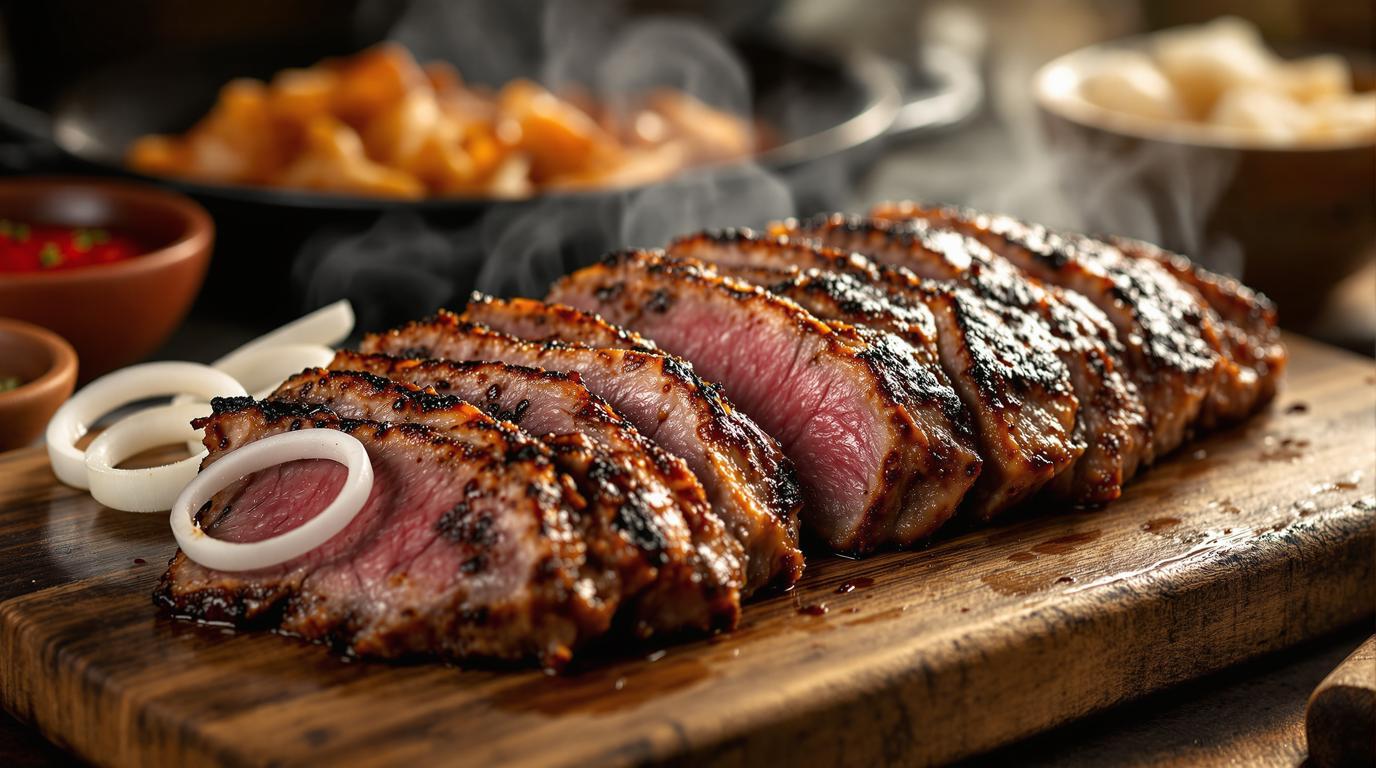The aroma of grilled lamb mingling with aromatic spices always transports me back to my first visit to Dakar’s bustling marketplaces. It was there I discovered dibi—Senegal’s magnificent grilled meat tradition that forever changed how I approach cooking lamb. The secret, I learned from an elderly street vendor with hands weathered by decades of cooking, isn’t elaborate spices but rather an ingenious two-stage cooking method that produces meat so tender yet caramelized it seems impossible. Today, I’m sharing this treasured technique that honors West African culinary wisdom while being entirely achievable in your home kitchen.
The Soul of Senegalese Dibi
Dibi (pronounced “dee-bee”) derives from the Bambara word for “grill,” though this simplicity belies its culinary sophistication. Unlike Western grilling that often prioritizes char over tenderness, dibi’s two-stage approach ensures both qualities coexist perfectly. While traveling through Senegal, I observed how this dish transcends mere sustenance—it’s a social centerpiece, often enjoyed late into the evening with animated conversation. The minimal seasoning might surprise you, but this restraint allows the lamb’s natural flavor to shine, much like I discovered when perfecting my smoky paprika burger that lets quality ingredients speak for themselves.
Essential Ingredients
For authentic Senegalese dibi, simplicity reigns supreme:
- 2 lbs (900g) lamb shoulder or leg, cut into 2-inch pieces
- 2 tablespoons (30g) kosher salt
- 1 tablespoon (15g) freshly ground black pepper
- 4 young onions or 2 medium onions, sliced into rings
- 1 tablespoon (15ml) fresh thyme leaves (optional, but my personal addition)
- 1 fresh chili pepper, finely diced (optional)
The quality of lamb is paramount here—seek out meat with good marbling, preferably from the shoulder or leg. I’ve found that cuts with some fat render beautifully during the initial slow-cooking phase, creating self-basting magic reminiscent of how my honey mustard ribs develop that fall-off-the-bone quality through patient cooking.
The Two-Stage Cooking Method
- Season the lamb: Massage the meat generously with salt and black pepper, ensuring every piece is well-coated. If using thyme and chili, incorporate them now. Allow the meat to sit at room temperature for 30 minutes.
- Initial slow cooking: Preheat your oven to 325°F (165°C). Wrap the seasoned lamb pieces in aluminum foil, creating a sealed packet. Place on a baking sheet and cook for 45-50 minutes until the meat is tender when pierced with a fork.
- Caramelization phase: Remove from oven, carefully open the foil (watch for hot steam!), and transfer the lamb to a hot cast-iron skillet or under the broiler. Grill for 5-7 minutes until a beautiful crust forms, turning occasionally.
- Prepare the onions: While the meat finishes, steam the whole onions for 5 minutes, then slice into rings.
Chef’s Note: The magic of dibi lies in this two-stage approach. The foil-wrapped first phase essentially steams the meat in its own juices, creating tenderness that would be impossible with direct grilling alone. Don’t rush this step—patience here is rewarded with exceptional texture.
Secret Techniques
Having prepared dibi in professional kitchens and at countless dinner parties, I’ve discovered a few crucial techniques that elevate this dish:
For those without a grill, create the signature “smoky essence” by heating a cast-iron skillet until it’s almost smoking before adding the par-cooked meat. The caramelization that occurs mimics traditional charcoal grilling beautifully. If you appreciate these kinds of transformative cooking techniques, you might enjoy learning how salt transforms Vietnamese coffee with a similarly unexpected approach.
Another professional tip: resist the temptation to over-marinate or over-season. Unlike my 45-minute fudgy brownies where complex flavors build through multiple ingredients, dibi’s character comes from simplicity and technique rather than elaborate seasonings.
Serving with Authenticity
Traditional dibi is served with raw onion rings and a vibrant chili sauce. Create a simple sauce by blending 2 chilies, 1 onion, 2 garlic cloves, and a splash of vinegar until smooth. Serve the meat nestled among onion rings with sauce on the side and warm bread to catch the flavorful juices.
The juxtaposition of the hot, caramelized meat against the sharp, raw onions creates a magnificent contrast that defines authentic Senegalese dining. This resourceful approach to flavors reminds me of traditional waste-reduction techniques, like how my grandmother taught me to transform banana peels into a spicy delicacy—both approaches honor ingredients and traditions.
When I serve dibi at home, I often pair it with a crisp rosé or light-bodied red wine that complements without overwhelming the meat’s natural flavors. The beauty of this dish lies in its honest presentation—arrange on a wooden board family-style, encouraging everyone to tear bread and build their perfect bite with meat, onions, and as much chili sauce as they dare.
